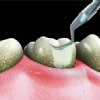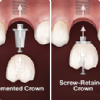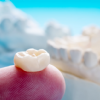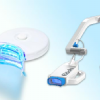
Keramikfüllung (Porzellanfüllung) (Inlay / Onlay) vs. Kompositfüllung
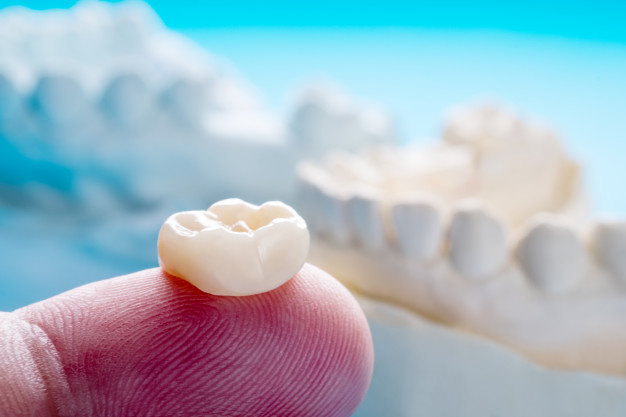
- 27 July 2022
- Dt. Hasan Karatay
Standard filling is the process of filling the tooth damaged areas with composite dental filling materials (amalgam fillings are not prefered recently). It is appropriate to use the inlay / onlay method when this process is not sufficient to cover large damaged areas on the teeth or when a more robust and aesthetic appearance is desired. It is also called ceramic (porcelain) filling.
Inlays are dental fillings that are specially produced for patients by using special materials designed for the fixation of the biting surface of molars. Onlays are partial crowns necessary for the restoration of the entire upper surface of the tooth.
We use ceramic (porcelain) materials to make ceramic filling from selected brands for our patients in our in-house-laboratory. The most aesthetic appearance is obtained by choosing the material and color according to your teeth. Inlay / onlay production procedure in our in-house-laboratory usually ends in 10 minutes and the patients can even watch the production process in the CEREC device from their seat. Then the ceramic filling is applied to the patient in a short time.
WHEN ARE THE CERAMIC (PORCELAIN) FILLINGS USED?
1. If the tooth loss is more than 50 percent, ceramic filling is preferred because of its durability.
2. To fix discoloration that may occur on the teeth.
3. To restore the tooth that has been damaged for any reason.
4. To change the size of the tooth.
5. When using smile design technic to change the shape of the teeth
6. If a highly aesthetic appearance is desired
HOW IS THE INLAY / ONLAY PROCESS?
After the first examination, the old fillings (composite or amalgam etc.), if any, is removed or the decayed parts of the tooth are removed meticulously.
Then the 3D image of the teeth is taken by CAM system and remaining part of the tooth (inlay / onlay) is extracted from the 3D image. By using CEREC technology, the suitable ceramic tooth piece for the cavity is created in computer environment in accordance with the neighboring teeth with an excellent accuracy. Our specialist dentists carefully place the manufactured part and check that it is perfectly accurate.
Finally, with a special adhesive material, the inlay/onlay is firmly adhered to the original tooth.
Thanks to CEREC technology, patients can receive these treatments in a very short time that take long time with traditional methods and at the same time they have extremely aesthetic and healthy teeth. This process is called One Session Dentistry or Cosmetic Dentistry.
PROS & CONS OF DENTAL FILLINGS?
Standard Dental Filling
Pros
Cons
- Billiger
- Geeignet, wenn der Schadensbereich gering ist
- Durch Temperaturänderung können mit der Zeit einige Mikroleckagen auftreten
- Speisereste können leicht zwischen benachbarte Zähne gelangen.
- Schwer an die natürliche Form des Zahns anzupassen
- Nicht geeignet für große Schäden an den Zähnen
- Einige Menschen sind möglicherweise allergisch gegen Füllmaterialien
- Sollte alle 3-5 Jahre ausgetauscht werden
Füllung aus Keramik (Porzellan) (Inlay / Onlay)
Profis
Nachteile
- The inlays / onlays keep their color in the long-term and do not differ from the original teeth
- Keine Nahrungsansammlung durch exzellenten Kontakt mit benachbarten Zähnen
- Der beschädigte Zahn wird in anatomischer Form wiedererlangt
- Sehr ästhetisches Erscheinungsbild
- Stabil, langlebig und abriebfest
- Perfekte Farbabstimmung mit Originalzähnen
- Enthält kein allergisches Material
- Mit dieser Methode können stark beschädigte Zähne wiederhergestellt werden
- Technische Anforderungen an die Vorbereitungsphase und die Zementierung
- Technologische Ausrüstung (CAD / CAM und CEREC) erforderlich
 DE
DE
 EN
EN AR
AR FR
FR TR
TR

